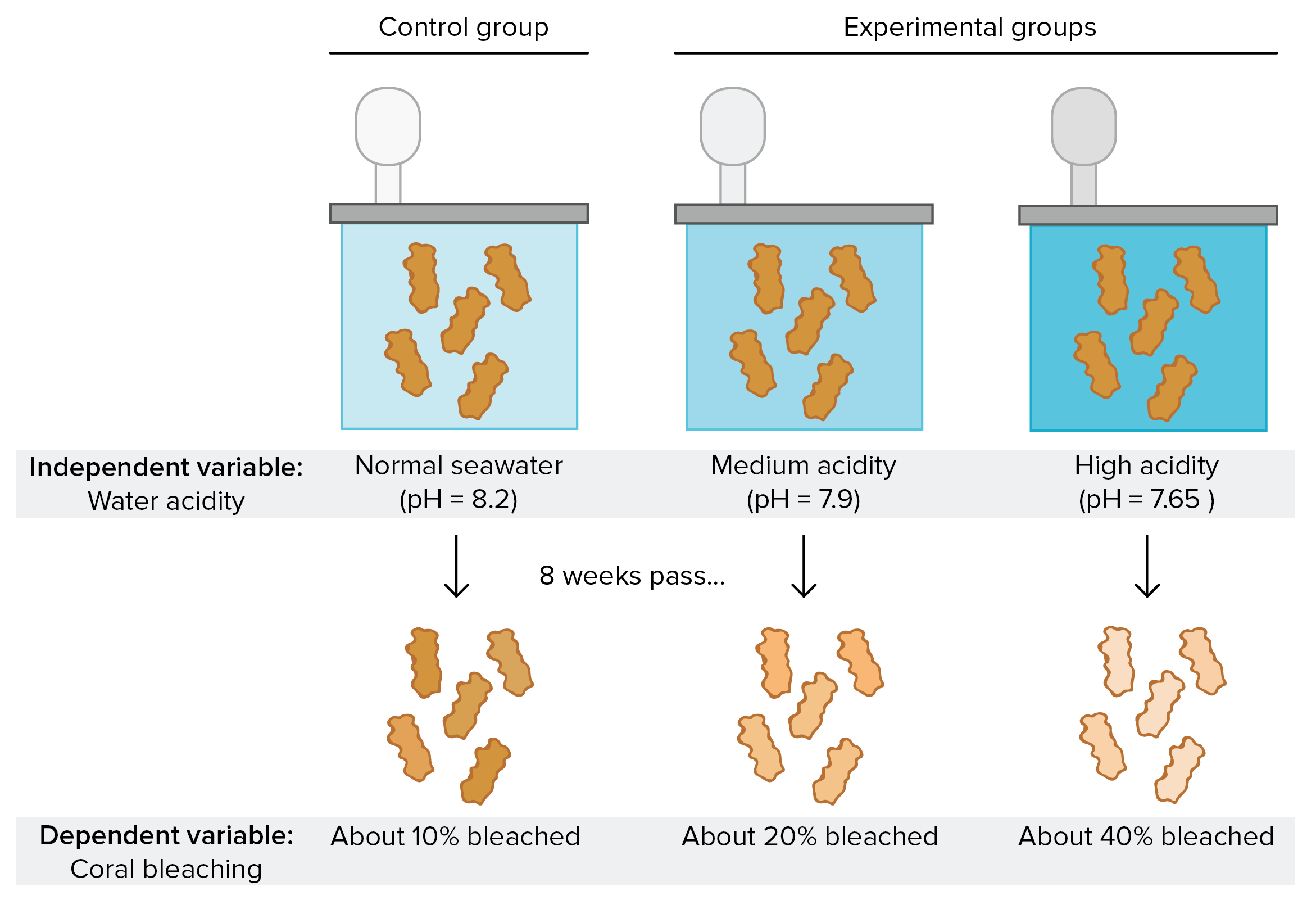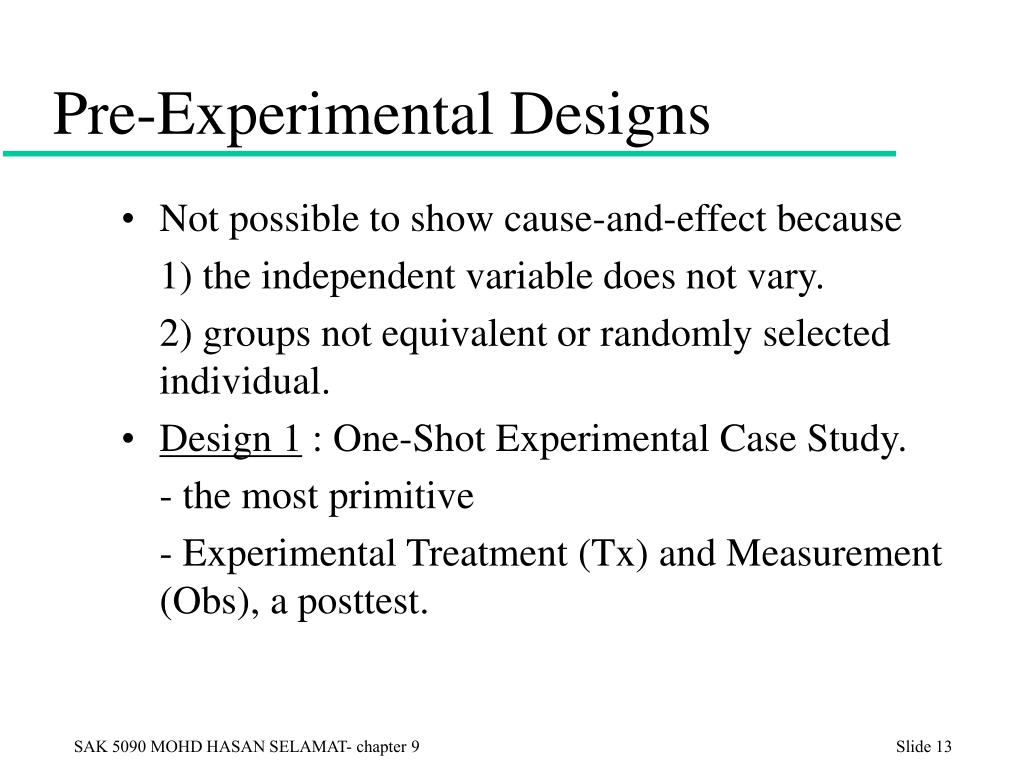Table Of Content

These are big collections of meta-analyses that help doctors and policymakers figure out what treatments work best based on all the research that's been done. Next on our roster is the Correlational Design, the keen observer of the experimental world. They don't interfere or get involved; they just observe and take mental notes about what's going on.
Experimental designs after Fisher
And like any study where participants know they're receiving an intervention, there's the potential for the results to be influenced by the placebo effect or other biases. In a Stepped Wedge Design, all participants or clusters start off in the control group, and then, at different times, they 'step' over to the intervention or treatment group. This creates a wedge-like pattern over time where more and more participants receive the treatment as the study progresses.
Covariate Adaptive Randomization
This process can be carried out using different experimental research methods. By comparing their outcomes in biochemical tests, the researcher can confirm that the changes in the plants were due to the sunlight and not the other variables. Your research design must include ways to minimize any risk for your participants and also address the research problem or question at hand.
Pretest-Posttest Design
Another type of quasi-experimental design might occur when the researcher doesn't have control over the treatment but studies pre-existing groups after they receive different treatments. The use of a control group is an important experimental design method that involves having a group of participants that do not receive the treatment or intervention being studied. The control group is used as a baseline to compare the effects of the treatment group.
This is necessary in just about every field of research, and especially in medical sciences. Experiments are an excellent data collection strategy for social workers wishing to observe the effects of a clinical intervention or social welfare program. An experiment is a method of data collection designed to test hypotheses under controlled conditions.
Statistical experiments, following Charles S. Peirce
Now, buckle up, because we're moving into the world of Factorial Design, the multi-tasker of the experimental universe. So, while Pre-Experimental Design may not be the star player on the team, it's like the practice squad that helps everyone get better. This procedure uses mathematical, physical, or computer models to replicate a real-life process or situation. It is frequently used when the actual situation is too expensive, dangerous, or impractical to replicate in real life.
Step 6: Decide on your data analysis strategies
A famous example is the research conducted to test the effectiveness of different public health interventions, like vaccination programs. Researchers might roll out a vaccination program in one community but not in another, then compare the rates of disease in both. Instead of selecting individual students, you'd introduce the program to a whole school or maybe even several schools, and then compare the results to schools without the program.

This involves dividing participants into subgroups or blocks based on specific characteristics, such as age or gender, in order to reduce the risk of confounding variables. This involves systematically varying the order in which participants receive treatments or interventions in order to control for order effects. In this design, the researcher manipulates one or more variables at different levels and uses a randomized block design to control for other variables. In this design, each participant is exposed to all of the different treatments or conditions, either in a random order or in a predetermined order. In medical or social research, you might also use matched pairs within your between-subjects design to make sure that each treatment group contains the same variety of test subjects in the same proportions.
An experimental design where treatments aren’t randomly assigned is called a quasi-experimental design. Despite this limitation, correlational designs are popular in psychology, economics, and epidemiology, to name a few fields. They're often the first step in exploring a possible relationship between variables. Once a strong correlation is found, researchers may decide to conduct more rigorous experimental studies to examine cause and effect.
How to Conduct Your Own Conformity Experiments - Verywell Mind
How to Conduct Your Own Conformity Experiments.
Posted: Wed, 29 Nov 2023 08:00:00 GMT [source]
They simply collected data to create a comprehensive picture of the subject matter. In real life, it's often not possible or ethical to randomly assign people to different groups, especially when dealing with sensitive topics like education or social issues. Similarly, in research, if you don't have a solid plan, you might get confusing or incorrect results. A good experimental design helps you ask the right questions (think critically), decide what to measure (come up with an idea), and figure out how to measure it (test it).
With Longitudinal Design, instead of measuring something just once, researchers come back again and again, sometimes over many years, to see how things are going. This helps them understand not just what's happening, but why it's happening and how it changes over time. Factorial designs are widely used in psychology to untangle the web of factors that influence human behavior. They're also popular in fields like marketing, where companies want to understand how different aspects like price, packaging, and advertising influence a product's success.
These experiments are laid on a strong foundation of experimental research designs. Unfortunately, it is difficult to conclude that women respond to apps better than men because the researchers could not randomly assign participants to gender. This means that there may be extraneous variables that are causing the results. A good research student can look at a design’s methodology and correctly categorize it.

No comments:
Post a Comment